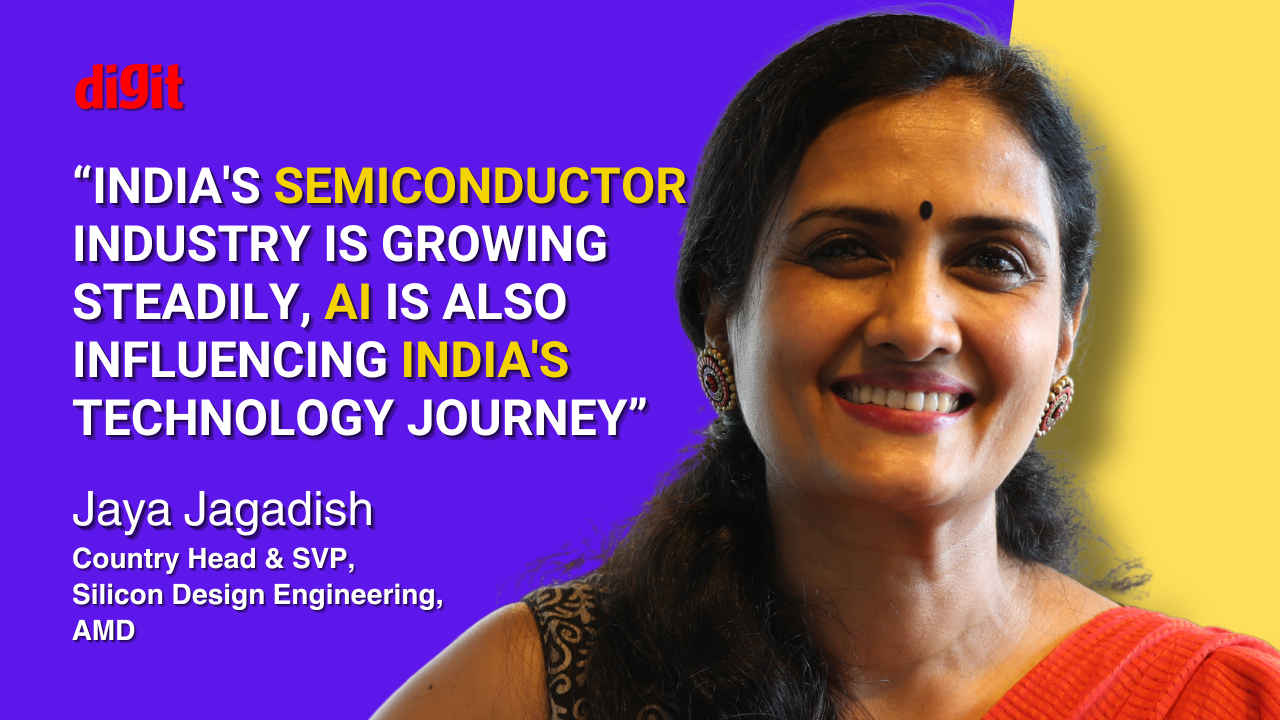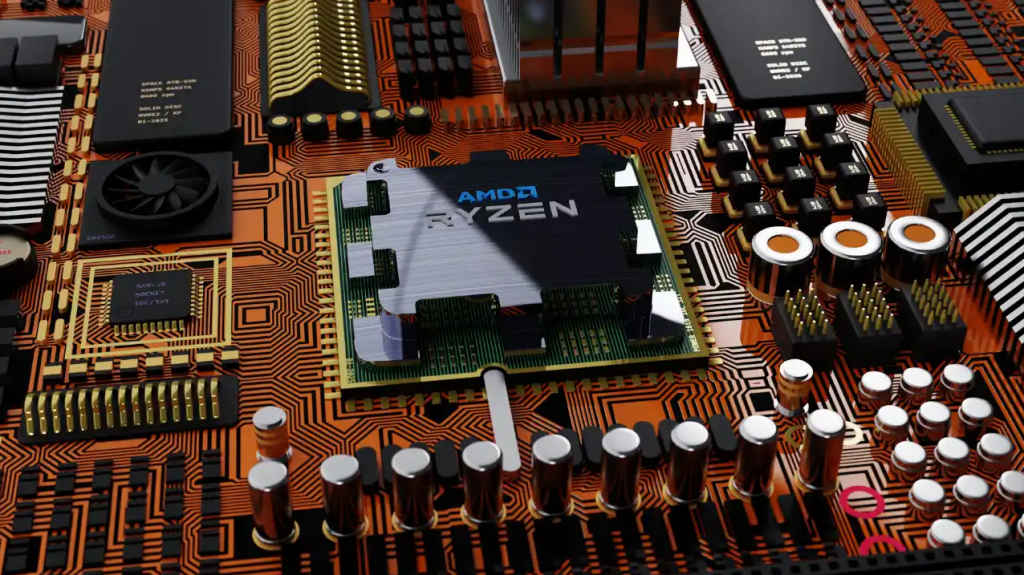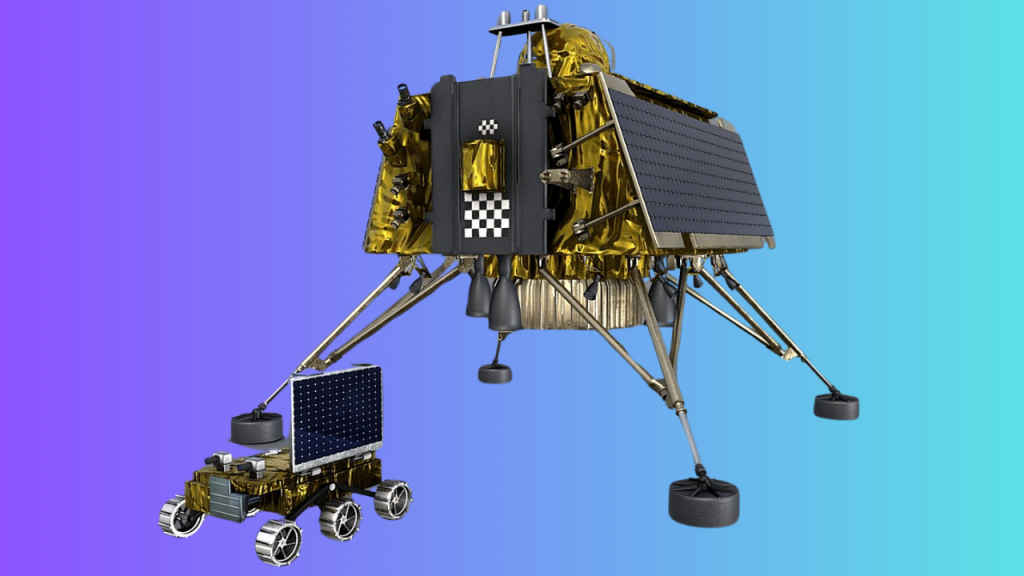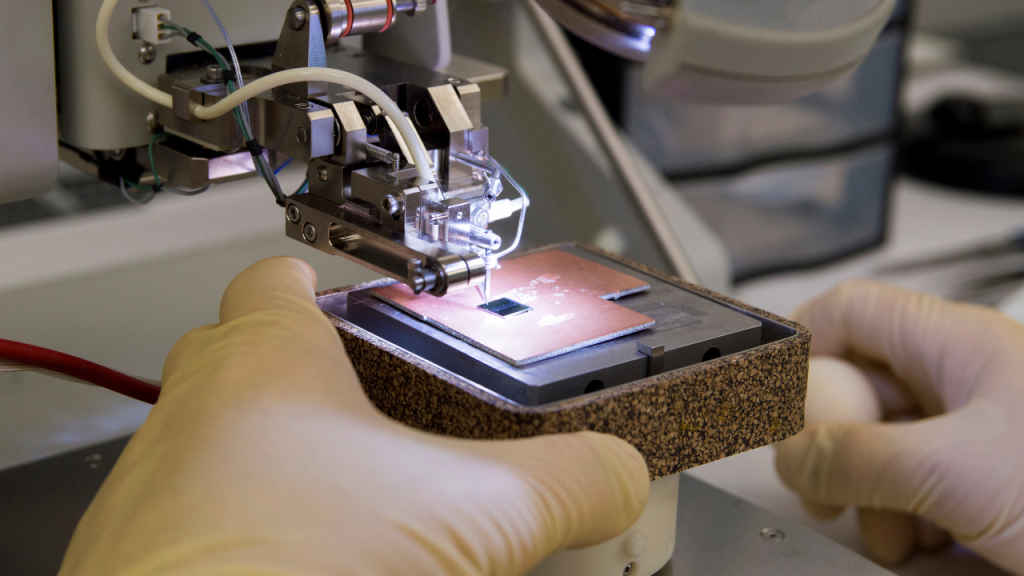AMD’s Jaya Jagadish: India to play ‘transformative role’ in global AI, datacenter and chip landscape

If there’s one thing that Jaya Jagadish is keen to remind me of, it’s that advanced AI and data center technology aren’t just lofty concepts anymore – they’re actively shaping the digital world we use every day, from streaming apps to e-commerce, and everything in between. “AMD’s AI and data center technology advancements are transforming everyday digital experiences making them more engaging, seamless, and secure,” according to Jagadish. And it’s not just marketing talk. Given her position as Country Head & SVP, Silicon Design Engineering, AMD India, Jaya Jagadish is deeply involved in the behind-the-scenes hardware and design decisions that power the foundational tech of our digital world.
Also read: AMD unveils Instinct MI325X AI chip, challenging Intel and NVIDIA
In an age where we’re hearing about AI breakthroughs every other day, it’s important to remember that behind every AI leap is a data center full of specialised processors, advanced networking gear, and memory technology. Jaya Jagadish explained exactly how AMD is fuelling innovations not just for HPC or enterprise clients, but for regular folks who just want smooth video streaming and more efficient online shopping.
AI, datacenters, and India
“The AMD Instinct MI300 series accelerators are designed to process large language models (LLMs) and complex AI tasks. They help enable quicker, more accurate online shopping recommendations and personalised content suggestions on streaming services,” she explained. It’s a reminder that AI tasks – like those powering Netflix’s recommendation engine or the product suggestions you see on Amazon – need specialised chips. But it’s not only about raw muscle in the GPU sense. AMD’s EPYC processors stand at the front lines of “cloud-native computing,” ensuring every microservice or container remains nimble and responsive.
The result, Jaya says, is “smoother streaming, reduced buffering, and faster load times,” making the overall user experience “truly consumer-centric.” Gone are the days when you’d wait minutes for a show to buffer or endure frequent connection drops. That shift partly comes from improvements in advanced data center networking – a big reason AMD offers things like Pensando DPUs and Alveo accelerator cards. The end result? Your Zoom calls or casual weekend Netflix binges get that extra dose of reliability and security.
Also read: AMD Unveils Expansive Lineup at CES 2025: Gaming, AI PCs, and Commercial Innovations

We can’t talk about data centers in 2025 without mentioning how India is becoming a hotbed for new server infrastructure. Cloud providers and enterprises are flocking here to build server farms, but the critical issue that needs underlining here is that India’s power supply isn’t infinite, and efficiency is pretty much the name of the game. That’s where Jaya Jagadish sees AMD playing a vital role.
“AMD is playing a crucial role in enhancing the energy efficiency of data centers, which is particularly important for rapidly growing markets like India,” she said, noting the very tangible challenges of power delivery in a country with massive demand spikes and infrastructural complexities. AMD’s big mantra here is all about maximising performance-per-watt – enhancing how much computational work you can get done for each watt of electricity used.
“Central to this effort is AMD’s ambitious 30×25 initiative, which targets a thirtyfold increase in energy efficiency for its server processors and accelerators by 2025,” Jagadish explained. According to her, “AMD-powered servers consume up to 20% less power than the competition,” which translates into cost savings and, ideally, a smaller carbon footprint. For data centers in India, that can be a game-changer, reducing the load on local grids and enabling bigger expansions without compounding energy issues.
Bringing affordable AI access to Indian consumers
Now, all that HPC stuff is well and good, but how does it help everyday Indians who might not have top-tier internet speeds or unlimited budgets? Jaya Jagadish insisted that AMD is committed to bridging that gap. “AI is reshaping industries across the globe, and AMD is committed to playing a key role in making AI-driven services more accessible and affordable for consumers,” she said. Part of this is a nod toward India’s national strategy: “AI for All,” “Make in India,” etc. The synergy there involves AMD delivering the robust hardware that local OEMs or government agencies can leverage for advanced AI solutions.
She cited a real-world example in healthcare, specifically the E-Sanjeevani telemedicine initiative. “In the healthcare sector, AMD has partnered with the Indian government to enhance the E-Sanjeevani telemedicine initiative. The virtual ophthalmology physician system, powered by our latest Turin Gen 5 EPYC CPUs, facilitates the delivery of remote healthcare services to more than 600,000 villages across India,” she said. With advanced computing, doctors can diagnose eye diseases without physically being in the same town – a huge leap for rural healthcare.
Beyond healthcare, AMD’s hardware also powers solutions in transportation (like the KAVACH 4.0 train collision avoidance system) and even the Indian space program. “AMD technology played a pivotal role in the Indian Space Research Organisation’s (ISRO) Chandrayaan-3 mission, and AMD-powered devices contributed to critical subsystems within the Vikram lander, which supported India’s historic lunar landing,” according to Jagadish. That’s no trivial bragging rights!

Also read: From AI to safety: Indian Railway’s tech transformation blueprint by Alstom
Because AMD also makes GPUs for gamers, I wanted to know how HPC synergy trickles down to e-sports or AAA titles. Jaya explained, “AMD is revolutionizing the online gaming experience with advanced data center technologies to deliver seamless, high-performance gameplay. AMD EPYC processors and Instinct accelerators are at the core of this innovation, which power high-performance servers capable of handling demanding workloads, including graphically intensive games.”
This means even smaller-scale dedicated game servers can handle more concurrency with minimal lag. “Gamers enjoy smooth, responsive gameplay with significantly reduced latency,” Jaya stressed, highlighting how the synergy between AI and HPC helps dynamically optimise performance, maybe even tweak rendering or manage intelligent NPC behaviours in real-time.
Indian semiconductor manufacturing aspirations
With the Indian government having approved the Semicon India programme with a total outlay of ₹76,000 crore for the development of semiconductor and display manufacturing ecosystem in the country, India’s aspirations are big without a doubt. As a member of the Indian government’s Semicon Talent Building Initiative, I had to ask Jaya Jagadish if India would ever become a serious competitor in semiconductor manufacturing? Jaya responded, “India’s semiconductor industry is growing steadily, driven by strong government investments and a vision for a self-reliant ecosystem.”
She points out that India started this journey only about 30 years ago, compared to the 70-year head start some other countries have. But the gap is closing quickly, backed by policies encouraging local design firms and start-ups. “The next step should be to focus on nurturing and growing local design companies. Supporting startups will be crucial in this regard,” she noted. AMD itself invests in that growth through collaborations like the Society for Innovation and Entrepreneurship (SINE) at IIT Bombay, funding energy-efficient chip startups. This approach fosters the creation of homegrown IP rather than just importing everything.
Also read: AI chips and Indian innovation: Insights from Tessolve CEO Srini Chinamilli

“These efforts solidify India’s position as a vital hub in the global semiconductor industry,” Jaya said, referencing how such development isn’t purely about assembly lines – it’s also about design expertise, local R&D labs, and honing specialised skill sets.
One of the final questions I asked Jaya Jagadish was how she sees India shaping the global AI and chip agenda over the coming decade. She was quick to point out that India could well become a “transformative” leader, not just a follower. “With a growing talent pool and robust government initiatives, India is poised to strengthen its leadership in semiconductor design, which already accounts for 20% of the global design workforce,” she said.
AI in the next five years
Then there’s the matter of AMD’s own $400 million investment in India over the next five years, which she sees as a blueprint for how multinationals and local ecosystems can collaborate. That investment includes building out a mega R&D campus in Bengaluru to house over 3,000 engineers – where presumably a chunk of the next generation of EPYC, Instinct, or embedded solutions might be conceived.
“AI is also influencing India’s technology journey, fundamentally reshaping how we work, learn, create, and innovate. To leverage its potential, AI must become pervasive spanning the cloud, enterprises, and end devices,” Jaya emphasised, underlining that AI shouldn’t remain a limited tool for big corporations. AMD, for its part, is committed to an “open ecosystem,” letting developers create AI solutions on top of its CPU, GPU, and adaptive computing platforms.
Also read: Intel-AMD join forces, as x86 fights the rise of ARM
Finally, Jaya offered her perspective on how AI may blend into everyday consumer tech. “AI is one of the defining technologies of our time; it is pervasive and can touch many aspects of our lives. AI will significantly shape how we engage with technology, enhancing various aspects of the business,” she said. She notes that healthcare, autonomous vehicles, and consumer gadgets stand to benefit most visibly in the near term.
“Another big area will be consumer technology, where AI will play a big role in offering tailored experiences in streaming, shopping, and news consumption while enabling interfaces to adapt intuitively to user behaviour,” she added, explaining how advanced interoperability across IoT devices can create a seamless environment that’s almost alive in how it senses your preferences.

After immersing myself in this interview, the picture couldn’t be clearer – AMD’s not just about discrete graphics cards or x86 server CPUs anymore. They’re tackling the entire ecosystem – networking, HPC, embedded AI, and even forging local alliances to push India’s semiconductor ambitions forward. With a ringside view of the action, Jaya Jagadish sees India as a rising star that could soon become indispensable to the global tech supply chain, particularly around AI and semiconductors. If that pans out, we might see a whole wave of “Designed in India” or “Engineered in India” tech solutions in the not so distant future.
Meanwhile, the next generation of AI-driven services will become more accessible to everyday people in India. As Jaya put it, “AI will also improve interoperability across IoT devices, creating a more cohesive smart home environment that enhances user experiences and introduces innovative capabilities.”
That’s the future she envisions, and it’s one in which AMD is banking that India will take centre stage – thanks to open AI innovation unlocking local entrepreneurial energy. And if India truly harnesses that momentum to become an AI hub, bridging the gap between advanced HPC labs and everyday consumer use, we might be on the brink of something transformative.
Also read: Meet Prithvi, NASA & IBM’s free AI model for better weather prediction
Jayesh Shinde
Executive Editor at Digit. Technology journalist since Jan 2008, with stints at Indiatimes.com and PCWorld.in. Enthusiastic dad, reluctant traveler, weekend gamer, LOTR nerd, pseudo bon vivant. View Full Profile




